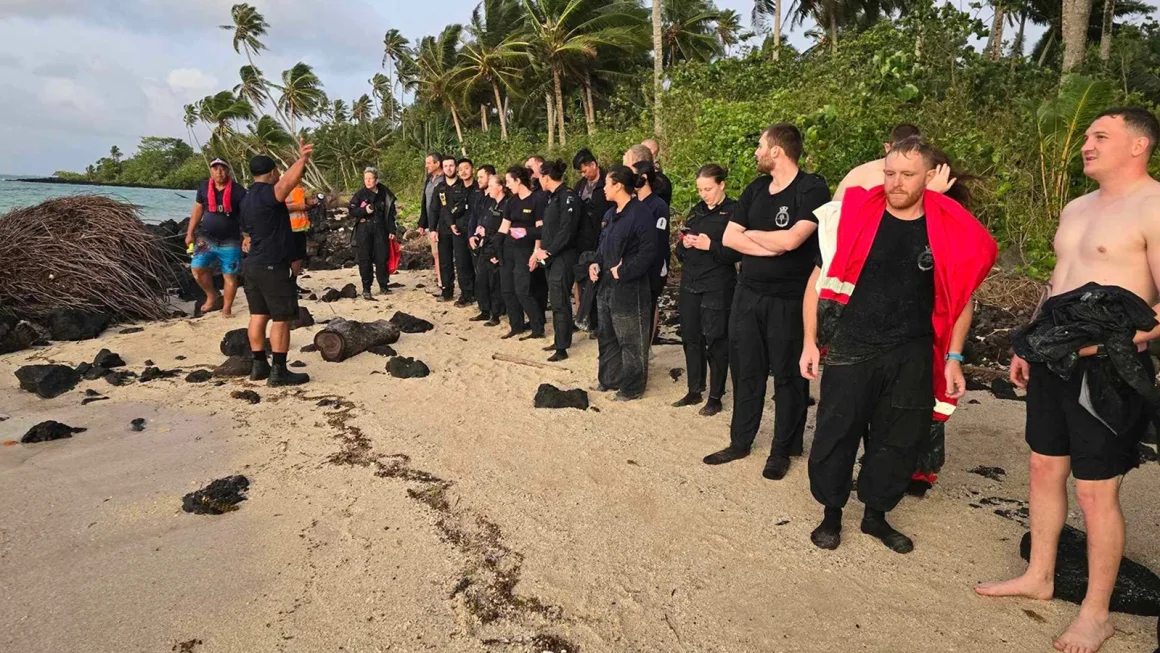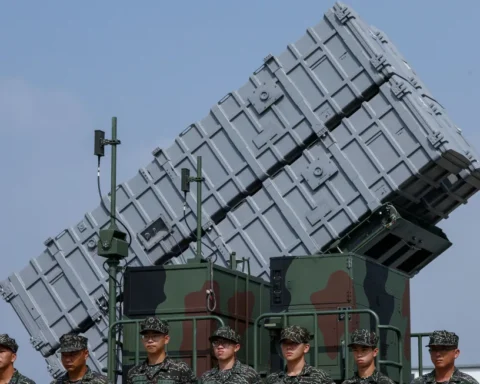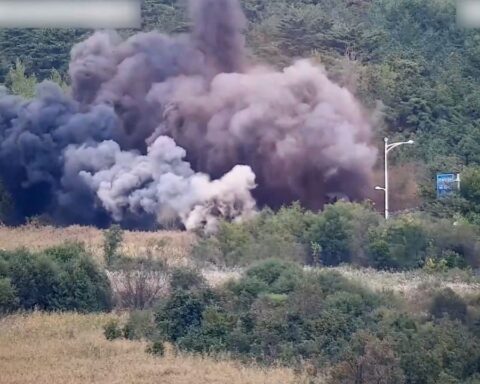New Zealand experienced its first loss of a naval vessel since World War II when the HMNZS Manawanui sank off the southern coast of Samoa. The incident occurred on Sunday and poses significant environmental risks, including a potential oil spill, in a region known for fishing and tourism.
A Sudden Maritime Disaster
The HMNZS Manawanui, a specialist dive and hydrographic vessel, encountered trouble on Saturday evening while conducting a reef survey near Upolu, Samoa’s most populated island. According to New Zealand authorities, the ship lost power and ran aground approximately one nautical mile from the shore. By early Sunday morning, the vessel was “listing heavily,” and smoke was seen around 6:40 a.m. Shortly after, the ship slipped below the ocean’s surface by 9 a.m.
Authorities noted that this is the first accidental sinking of a New Zealand naval vessel since World War II. A formal court of inquiry has been initiated to investigate the causes of the incident.
Environmental Concerns Emerge
The sinking has raised alarms about potential ecological damage. The waters surrounding Upolu are crucial for local fishing and are home to diverse marine life, including sea turtles. Brian Rose, manager at Coconuts Beach Club in Maninoa, expressed his concern: “We have a large population of sea turtles that swim around our lagoon, and people enjoy that. I’m hoping that nothing happens to them,” he told CNN RNZ.
New Zealand’s Defense Minister, Judith Collins, emphasized the need to assess the ship’s depth and potential spill risk. “It’s got a lot of oil on board. … It’s got lubricating oil, hydro oil, diesel, urea. It’s got a lot of stuff in it. And I don’t think we can just leave it like that,” she said during an interview with Newstalk ZB.
Efforts to Contain the Crisis
In response to the emergency, divers were sent to the scene on Sunday night to evaluate the situation. “They’ll be looking to see what they can, but it’s going to be quite a big job,” Collins added. Meanwhile, Samoan authorities received a distress call on Saturday night, which prompted the deployment of small boats to assist with evacuating the ship’s crew.
Rescue operations involved vessels and aircraft, including the Royal New Zealand Air Force’s P-8A Poseidon and C-130J, by 5 a.m. Sunday, all 75 passengers and crew had been safely evacuated. However, onlookers in the village of Tafitaola witnessed the vessel’s dramatic end, with smoke rising from the ship’s bridge. “It took 15 minutes for the boat to be fully ablaze and then sink,” shared Dave Poole, adding that local villagers left their church service to watch the ship go down.
Addressing the Aftermath
Acting Samoan Prime Minister Tuala Tevaga Iosefo Ponifasio warned in a press statement that the likelihood of an oil spill is high, describing the HMNZS Manawanui as “not recoverable” after it sank. New Zealand Prime Minister Chris Luxon announced that “environmental spill kits” had been dispatched to Samoa to help reduce the impact of any oil leaks.
The HMNZS Manawanui, purchased in 2018 for NZD 100 million (USD 61 million), was relatively new to New Zealand’s naval fleet. Despite being built in the early 2000s, it served as a critical asset for surveying harbors and preparing areas for larger support vessels, particularly in situations like disaster relief. The loss of this vessel is a significant setback for New Zealand’s navy and a challenge to the environmental safety of Samoa’s coastal waters.
Preserving Samoa’s Future
The sinking of the HMNZS Manawanui marks a sad moment in New Zealand’s naval history and a critical time for environmental response efforts. The people of Samoa and conservationists hope for a swift resolution to mitigate the potential damage. As Brian Rose stated, the concern remains for the region’s cherished marine life and the livelihoods of those who depend on these waters. The situation calls for continued vigilance to ensure that the ecological impact is minimized and that the Pacific waters remain a vibrant habitat for years.







